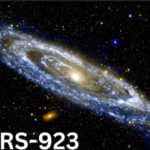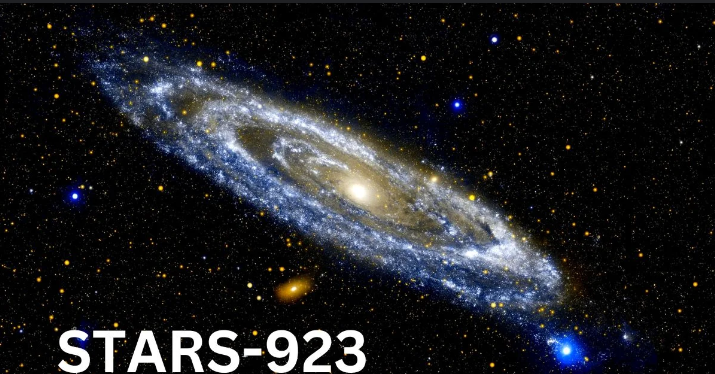Stars-923 stands out as a celestial wonder that has garnered attention from astronomers and sky watchers alike. In the vast realm of stars that dot the universe,exhibits characteristics that place it among the most intriguing stars ever documented. With its unique classification and captivating attributes, it holds a special place in the study of astronomy.
In this article, we will explore what makes special, how it contributes to the broader understanding of stellar phenomena, and its significance in the grander cosmic narrative.
What is Stars-923?
refers to a particular star identified in a remote region of the cosmos that has been closely studied due to its unusual luminosity, temperature, and behavior. Often referred to as an “enigmatic” or “mysterious” star by scientists, is believed to offer insights into stellar evolution and lifecycle stages. While many stars follow predictable patterns based on their mass, age, and chemical composition, Stars-923 seems to challenge some conventional wisdom about how stars behave.
The Unique Classification of Stars-923
In terms of star classification, does not fit neatly into the commonly known categories such as main-sequence stars, red giants, or white dwarfs. Instead, it sits on the cusp of several classifications, demonstrating a blend of features that make it a rare cosmic gem. Its spectral type, which is how scientists determine a star’s temperature and chemical composition, shows an anomaly that hints at a possible binary system or a star undergoing a rare evolutionary phase.
luminosity fluctuates, an attribute often linked with variable stars, though it exhibits far more stable intervals than typical variables. This fluctuation is thought to be a consequence of complex interactions within its stellar interior, creating a signature that both perplexes and excites astronomers.
How Does Stars-923 Fit Into Celestial Phenomena?
Stars-923 is not just a singular phenomenon. It helps explain broader questions about star formation and stellar death. In the context of stellar evolution, many scientists look at such stars to understand how massive stars live and die, often ending in supernovae or turning into black holes or neutron stars. , though smaller than a typical progenitor of a supernova, exhibits some precursors to what could eventually lead to a significant transformation.
Stars like may also provide clues about star formation in distant galaxies, including insights into how interstellar gas and dust coalesce into the brilliant points of light that illuminate our night sky.
Stars-923 and Its Celestial Significance
The celestial significance of lies not only in its uniqueness but also in its potential to deepen our understanding of the universe. In a field where the vast majority of observed stars behave predictably, anomalies like Stars-923 drive scientific inquiry forward. It raises questions about stellar dynamics, gravitational influence, and the possibilities of companion stars or planets that may orbit the star, impacting its properties in ways yet to be fully understood.
For centuries, humans have gazed up at the stars in wonder, trying to unlock the mysteries of the cosmos. , in particular, has given modern astronomers a reason to continue exploring the unknown, reminding us that there is always more to discover.
The Observational History of Stars-923
The first recorded observation of dates back to the early 2000s, when advanced telescopes identified a star that exhibited properties unlike any seen before. Initial observations were confused, as ‘s spectral signature didn’t match any of the known types cataloged in star classification systems at the time.
Over the next decade, astronomers focused more resources on studying this star, employing both ground-based observatories and space telescopes to gather data. The star’s enigmatic behavior drew the attention of international research teams, who continue to work on decoding its secrets to this day.
The Future of Research on Stars-923
As technology advances, so too does the ability to explore stars like in greater detail.
Stars-923 in Popular Culture and Mythology
Stars have always held a prominent place in human culture, and is no different. Though relatively recent in terms of its discovery, it has inspired awe in stargazers and has been featured in both scientific publications and popular astronomy media. Its mysterious behavior has even sparked rumors and stories, likening it to celestial myths from ancient civilizations.
Observing Stars-923: What You Can See
If you are a stargazing enthusiast, you may wonder if Stars-923 is visible with the naked eye. Unfortunately, due to its location and brightness, observing Stars-923 requires a telescope of significant power. However, for those who do have access to such equipment, -offers a rewarding sight. Its erratic behavior, coupled with its faint but distinct glow, makes it a star worth watching.
Astronomy clubs around the world often organize “Star Parties” where members can take turns observing rare celestial objects, including , when the conditions are right. These gatherings provide an opportunity not only to view the star but also to engage with fellow enthusiasts and share insights about the mysteries of the cosmos.
Frequently Asked Questions
What makes Stars-923 unique?
Stars-923 stands out due to its rare combination of luminosity fluctuations, spectral anomalies, and unpredictable behavior, making it a subject of ongoing scientific study.
Can I see Stars-923 with the naked eye?
No, Stars-923 is not visible without a telescope. It is located in a remote region of space and requires advanced equipment for observation.
Conclusion
Stars-923 is more than just a distant point of light in the night sky. It is a puzzle that challenges astronomers and captivates stargazers, offering a glimpse into the complexities of the universe.








